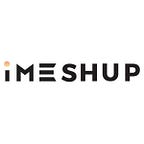Zbrush is 3D design tool that’s all about the brushes. It’s main claim to fame? It has special building blocks called pixols. Much like pixels, these data points have X coordinates, Y coordinates, and color information — but since they’re in 3D, they’ve also got a Z coordinate, and material information too. These building blocks are part of the reason why Zbrush is specifically lauded for its artistic functionality. Unlike many other 3D modeling software packages, Zbrush is streamlined for purely artistic sculpting. This is the software to use if you’ve got solid concept art to work with.
3D design OG
Zbrush was one of the early game changers in 3D design. While its origin story isn’t riveting (its demo debuted in 1999, it was Best of Show at the 2000 MacWorld Expo, and it’s been successful ever since), it was created by someone with the dope nickname “the Pixolator.” There is clearly a lot of 3D modeling software out there, but unlike many newer 3D design tools, this one has the bonus of having been around the block a few times. Over the past sixteen years, it’s come a long way from its meager demo to industry-kingpin status.
Pros
As mentioned earlier, Zbrush is often cited as being the first on the list for sculpting. When 3D artists need to do some heavy sculpting, it’s definitely the tool of choice. Zbrush is capable of manipulating models with a polycount of 20,000,000 — making it ideal for detailed, high-poly work (check out these examples to get a good picture!) The system of customizable brushes allows powerful control that room for creativity. Features exclusive to this software include noise sculpting, sculpting layers, and some key tools involved in re-topographizing. The large user community that Zbrush has had since its early days mean a ton of resources exist for the program, too. While a Zbrush license is relatively expensive (see below), there have been free upgrades since its genesis that keep this software equipped with the most cutting-edge in 3D.
Cons
Obviously, all software has its own look, feel, and learning curve. Zbrush is no different: getting the hang of its UI takes some time, and is highly customizable. Something that also requires some time is the artist workflow, which might confuse more than aide upon first use. Similarly, the perspective view is a bit awkward: Zbrush has its own camera system based on the relationships between the model and the viewpoint. It’s also not particularly well-suited for renders — for that, it’s better to use an outside rendering engine. Zbrush is not really one-size-fits-all; it’s a program with a pretty specific use — art-focused sculpting in high poly. There’s not much in the way of low-poly modeling (with the exception of features of the new Zmodeller Brush system), rigging, and animation. And last but not least, there’s the cost: a single-user license for Zbrush will run you $795.
Resources
Now that you know a bit more about this powerful, detail-oriented software, it’s time to get into learning how to use it. But don’t fear: It’s been around for awhile, so there’s plenty of help and resources available for learning this software:
- Zbrush resources Facebook group
- Pixologic: Zbrush’s parent company website, which has tutorials, resources, and downloads
- ZbrushCentral: the main forum for all things Zbrush
- Zbrushguides: a hub of info, including resources like brushes and materials
- 3dmotive: tutorial and resource hub offering help learning Zbrush
- Zbrush artwork gallery on Pixologic
- Polycount’s resource masterpost
Want more info, news, and insight into the world of 3D? Read this article and others like it on iMeshup’s blog!
